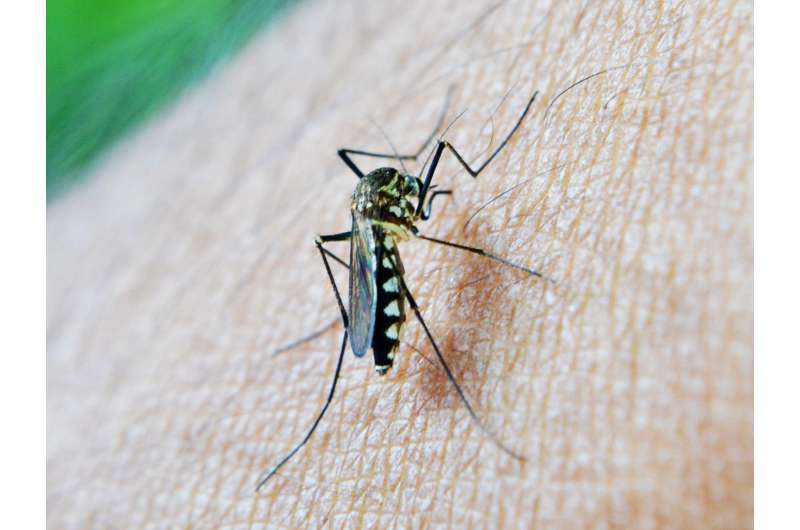The fatal chink in malaria parasite's armor

Researchers from The Australian National University (ANU) have exposed a fatal flaw in the deadly parasite that causes malaria—one of the world's biggest killers.
The researchers discovered a vulnerability in the parasite's metabolism, where the breakdown of certain nutrients causes the cell to struggle to keep fat molecules where they should be. The flaw could be harnessed for treatment.
Malaria is an often fatal disease caused by the spread of a parasite transmitted from mosquitos to humans. The parasite travels from the mosquito into the body's red blood cells where it hides from the immune system, making it difficult to naturally eradicate.
By overloading the infected cell with calcium and depleting the amount of cholesterol, fat-moving proteins are activated, sending an "eat me" signal from the parasite to the body's immune system.
Lead researcher and ANU Ph.D. candidate, Merryn Fraser, says these chinks in the parasite's armor could be exploited to formulate new drugs to battle malaria.
"We've shown that we can use chemical treatments to make the parasites more susceptible to being eaten by immune cells. That indicates we could maybe do the same thing with a drug," Ms Fraser, from the ANU Research School of Biology, said.
"We found that when the parasite ingests certain nutrients, it causes the red blood cell to turn on a distress beacon. This would call the immune cells in to attack the parasite.
"We then found that we could exploit this vulnerability by using a particular chemical on the red blood cells, which increased the chances of the parasites being eaten by the immune cells."
The researchers say in recent years malaria parasites have become increasingly resistant to the main drugs used for treating malaria.
"We're getting really worried about parasite drug resistance and that is underpinning our need to look for new drugs and new treatments," Ms Fraser said.
"We don't have a highly effective vaccine, so while that is still being developed, we really need to make sure that we have other ways of effectively treating the disease."
Malaria killed over 200 million people last year and remains the deadliest parasitic disease in the world.
The researchers say climate change could have increased the range of the habitat that the mosquitos that spread malaria can live in. This has reinforced the urgent need for new methods of fighting the disease.
These new findings come as part of a larger study into how the malaria parasite interacts with red blood cells and the immune system.
"What we've really been trying to study is what happens to the parasite while it lives in the red blood cells so we can learn as much as possible about malaria and how it operates," Ms Fraser said.
"Understanding these weaknesses in the parasite is another step in moving towards our big target of eliminating malaria worldwide."
Provided by Australian National University





















